Cairo's Timeless Treasures Unveiled
Embark on a captivating journey through Cairo's rich history and vibrant culture on this free walking tour. Discover iconic landmarks and hidden gems!
Time
3 Hours
Stops
8 Places
Distance
7.9 km
Tahrir Square
Begin your journey at Tahrir Square, the heart of modern Cairo and a symbol of Egyptian political life, known for its role in the 2011 revolution.
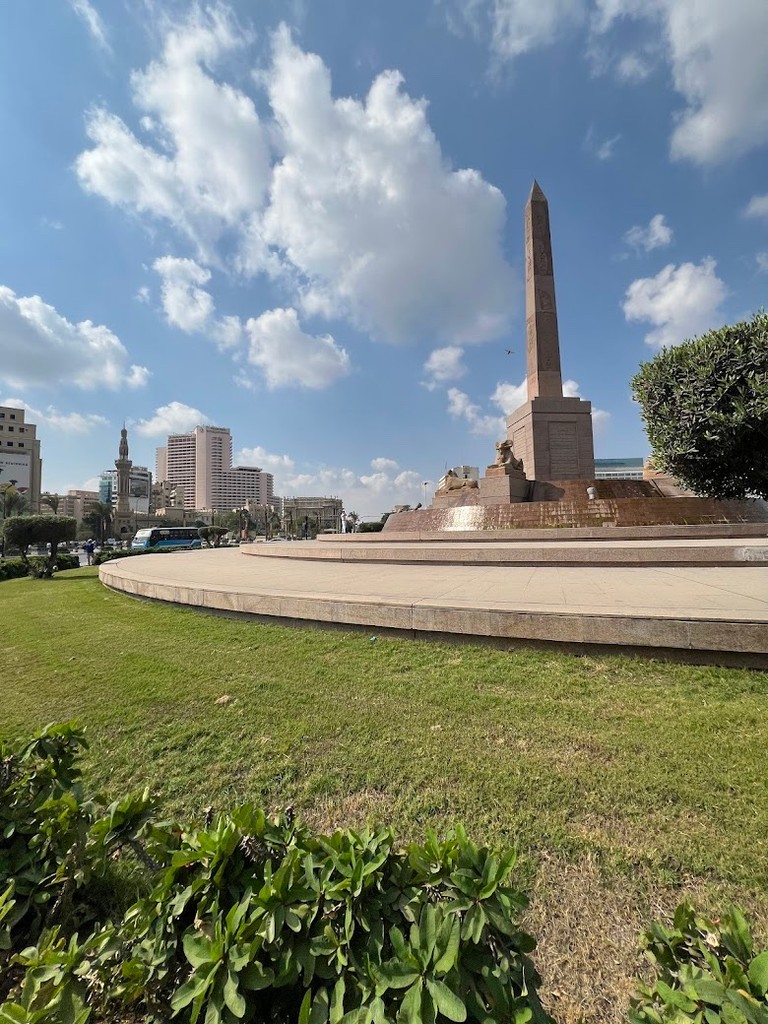
Tahrir Square (Source: Google Maps)
Tahrir Square, often referred to as the heart of modern Cairo, is a significant urban space that has witnessed monumental events in Egyptian history. It gained international fame during the 2011 revolution, serving as a focal point for protests demanding political reform and social justice. The square is surrounded by important governmental buildings and has been a site for various demonstrations and celebrations throughout history. Architecturally, the square features a mix of modern and traditional styles, with notable structures such as the Egyptian Museum nearby. Tahrir Square remains a symbol of the Egyptian people's resilience and determination for change.
The Egyptian Museum
Just a short walk from Tahrir Square, this museum houses an extensive collection of ancient Egyptian artifacts, including the treasures of Tutankhamun.
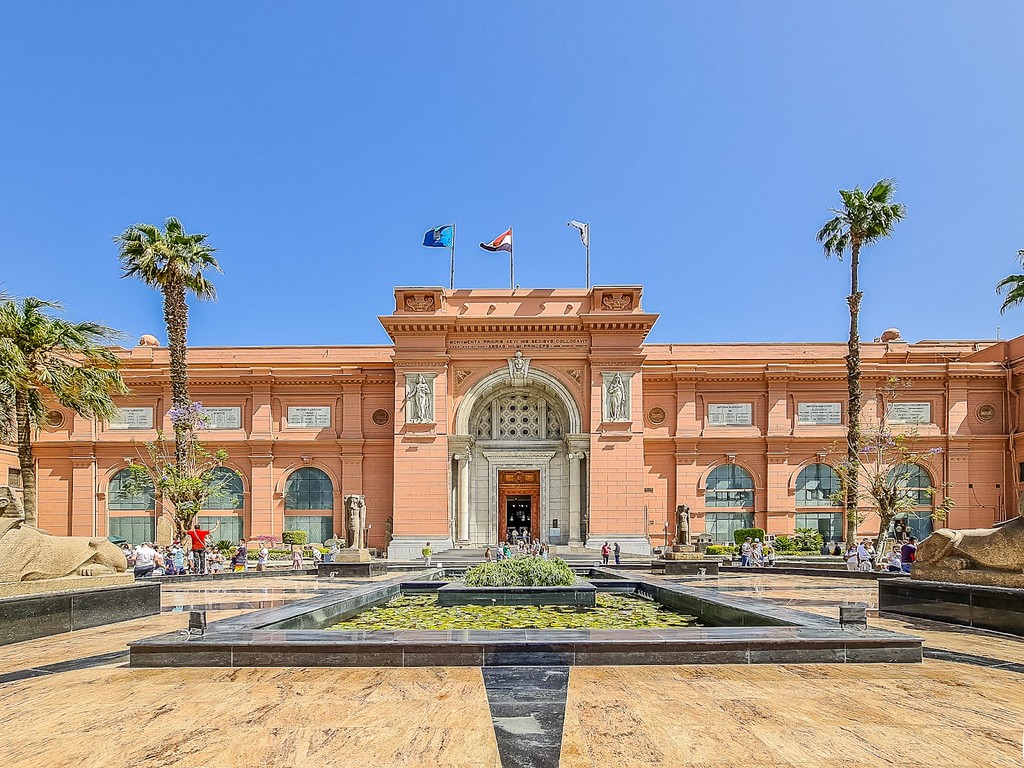
The Egyptian Museum (Source: Google Maps)
The Egyptian Museum, located near Tahrir Square, is home to an unparalleled collection of ancient Egyptian artifacts. Established in 1902, the museum houses over 120,000 items, including the treasures of Tutankhamun, which were discovered in 1922 by Howard Carter. The museum's neoclassical architecture is as impressive as its contents, featuring grand halls and intricate displays. Visitors can explore mummies, statues, and everyday objects from ancient Egyptian life, providing insight into the civilization's rich history. The museum plays a crucial role in preserving Egypt's cultural heritage and is a must-visit for anyone interested in the ancient world.
Abdeen Palace Museum
Head east to explore the Abdeen Palace, an opulent 19th-century royal residence showcasing a wealth of artifacts and historical exhibits.
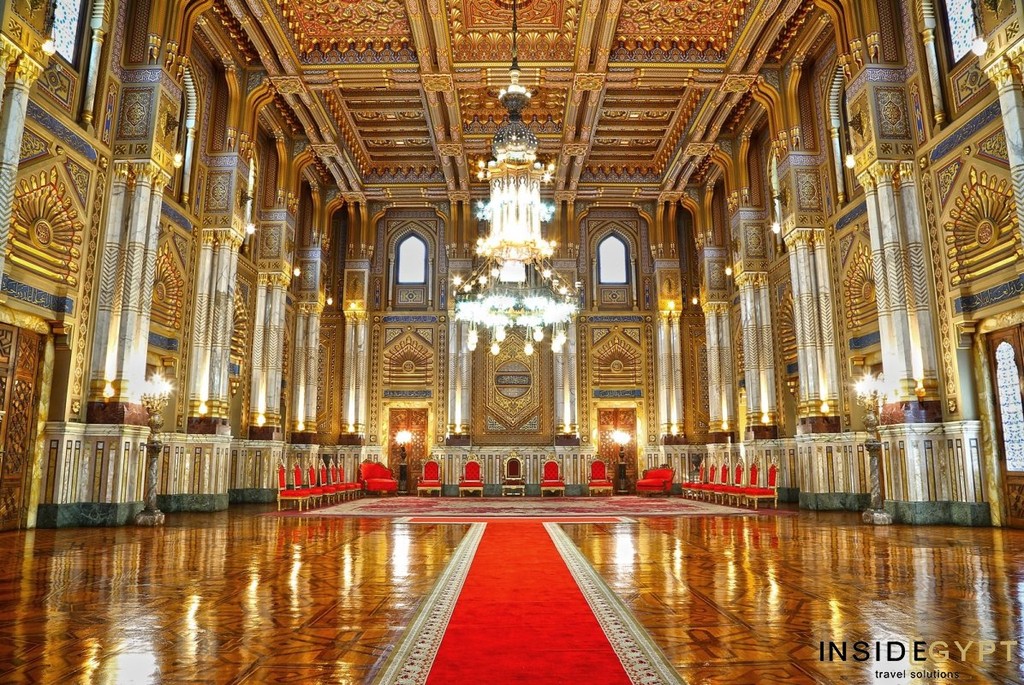
Abdeen Palace Museum (Source: Google Maps)
The Abdeen Palace Museum, a stunning example of 19th-century architecture, was originally built as a royal palace for the Khedive of Egypt. Its opulent design features lavish rooms adorned with intricate decorations, reflecting the grandeur of the royal lifestyle. The palace has served various purposes throughout history, including as a government building. Today, it houses a museum showcasing a wealth of artifacts, including royal gifts, historical documents, and artworks. The Abdeen Palace Museum offers a glimpse into Egypt's royal past and the evolution of its political landscape, making it a significant cultural site in Cairo.
Al-Rifa'i Mosque
Adjacent to Sultan Hassan Mosque, the Al-Rifa'i Mosque is notable for its rich history and the royal tombs it houses.
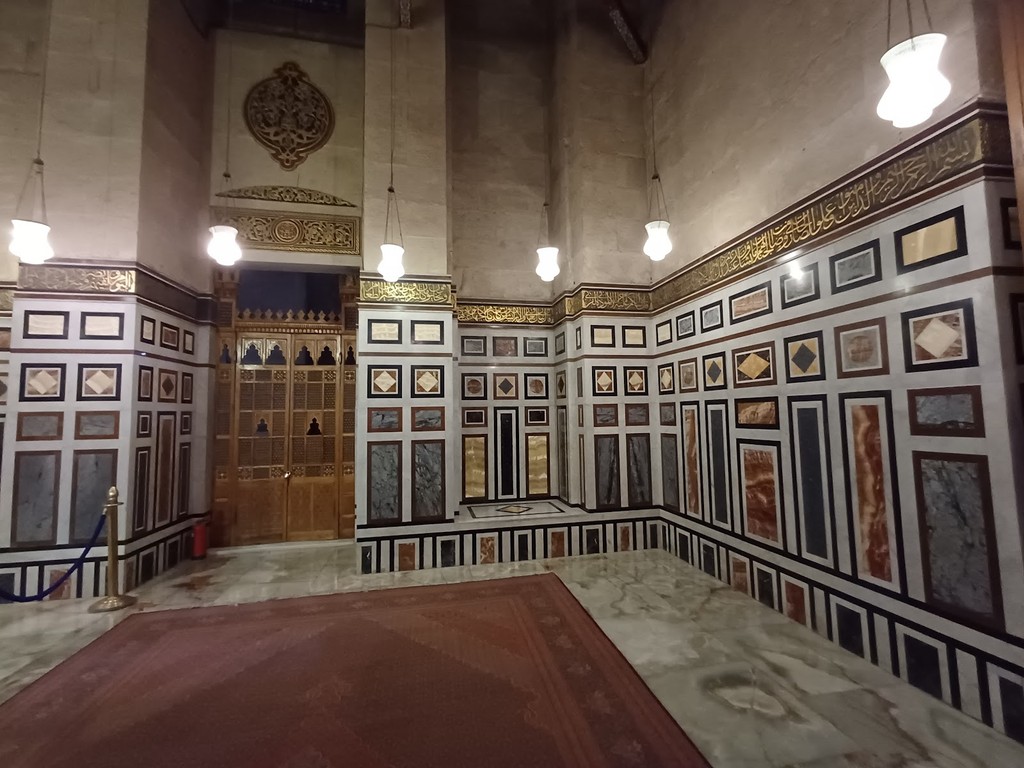
Al-Rifa'i Mosque (Source: Google Maps)
Adjacent to the Sultan Hassan Mosque, the Al-Rifa'i Mosque is an architectural marvel known for its stunning design and historical significance. Completed in the early 20th century, the mosque features a blend of Islamic architectural styles, including intricate tile work and soaring minarets. It is notable for housing the tombs of several members of the Egyptian royal family, including King Farouk. The mosque's serene atmosphere and beautiful interiors attract visitors seeking both spiritual solace and architectural beauty. As a site of historical importance, Al-Rifa'i Mosque continues to play a role in Egypt's cultural and religious life.
Sultan Hassan Mosque
Walk south to the Mosque of Sultan Hassan, a masterpiece of Mamluk architecture and one of the largest mosques in the world.
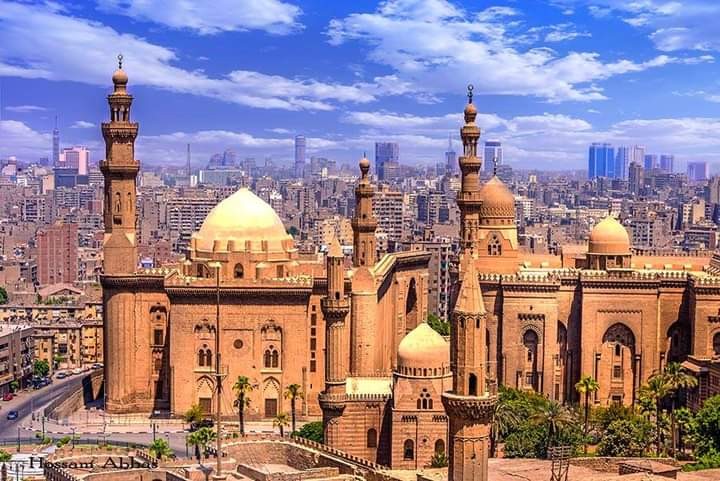
Sultan Hassan Mosque (Source: Google Maps)
The Sultan Hassan Mosque, built in the 14th century, is a masterpiece of Mamluk architecture and one of the largest mosques in the world. Its grand entrance and towering minaret dominate the skyline of Cairo, showcasing intricate geometric designs and stunning calligraphy. The mosque was commissioned by Sultan Hassan ibn al-Nasir and served as a center for education and religious practice. The vast interior features a large courtyard, prayer hall, and beautiful domes, providing a serene space for worship. The mosque's architectural significance and historical context make it a vital landmark in Cairo's rich Islamic heritage.
Mosque of Muhammad Ali
Continue to the Mosque of Muhammad Ali within the Citadel of Cairo, an iconic structure known for its grand Ottoman architecture and panoramic views of Cairo.
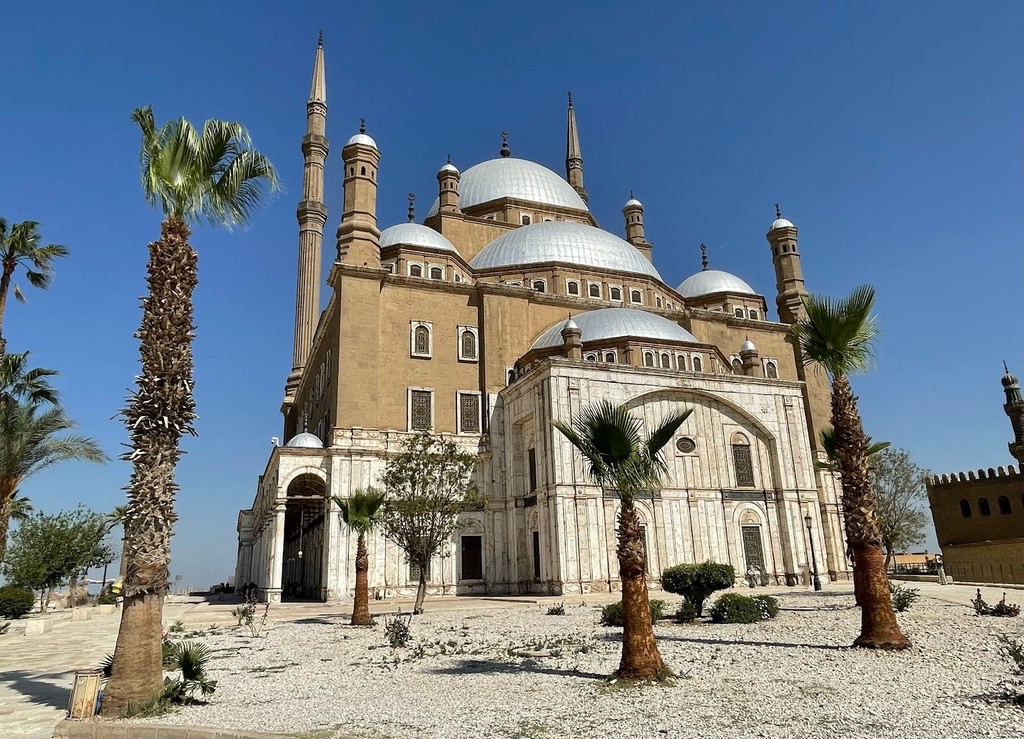
Mosque of Muhammad Ali (Source: Google Maps)
The Mosque of Muhammad Ali, also known as the Alabaster Mosque, is a prominent landmark within the Citadel of Cairo. Commissioned by Muhammad Ali Pasha in the 19th century, this grand structure is renowned for its stunning Ottoman architecture, characterized by its large dome and exquisite minarets. The mosque's interior is equally impressive, featuring intricate decorations and vast prayer halls. It offers panoramic views of Cairo from its elevated position within the Citadel, making it a popular spot for visitors. The Mosque of Muhammad Ali symbolizes the power and vision of Muhammad Ali Pasha, who is often regarded as the founder of modern Egypt.
Ibn Tulun Mosque
Head west to the Ibn Tulun Mosque, one of Cairo's oldest and largest mosques, featuring unique architectural elements and a serene atmosphere.
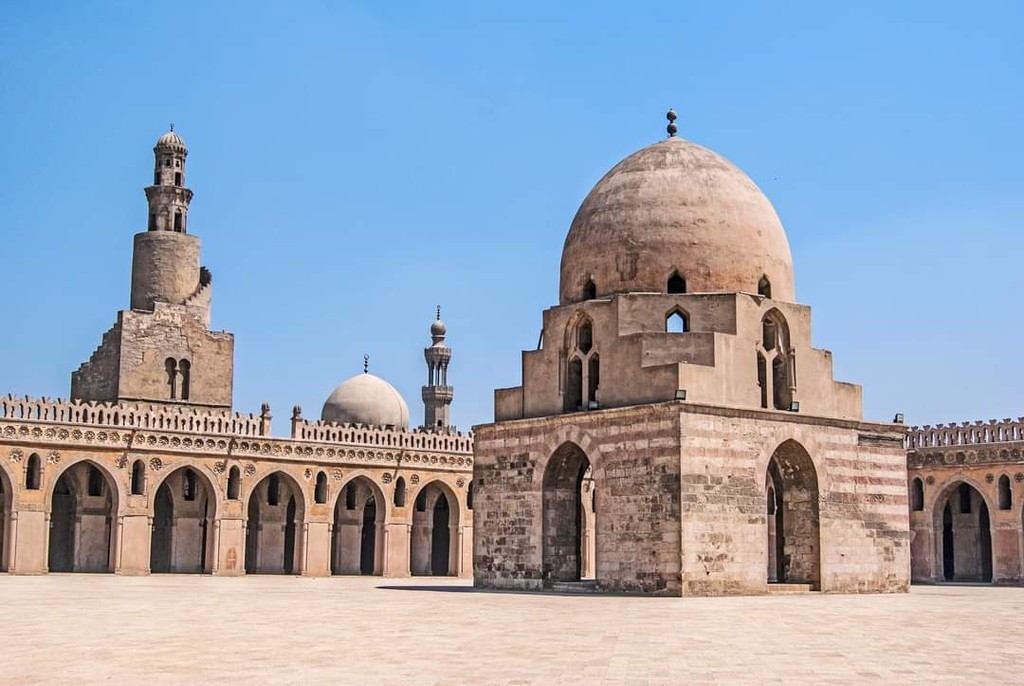
Ibn Tulun Mosque (Source: Google Maps)
The Ibn Tulun Mosque, one of Cairo's oldest and largest mosques, is a remarkable example of early Islamic architecture. Built in the 9th century, it features unique architectural elements, including a large courtyard and a distinctive minaret, which is one of the oldest in the city. The mosque's design reflects the influences of various architectural styles, showcasing a harmonious blend of simplicity and grandeur. Its serene atmosphere provides a peaceful retreat from the bustling city. The Ibn Tulun Mosque is not only a place of worship but also a significant historical site that offers insight into the early Islamic period in Egypt.
Gayer-Anderson Museum
Conclude your tour at the Gayer-Anderson Museum, adjacent to the Ibn Tulun Mosque, which offers a fascinating glimpse into 17th-century Cairo through its collection of art and antiquities.
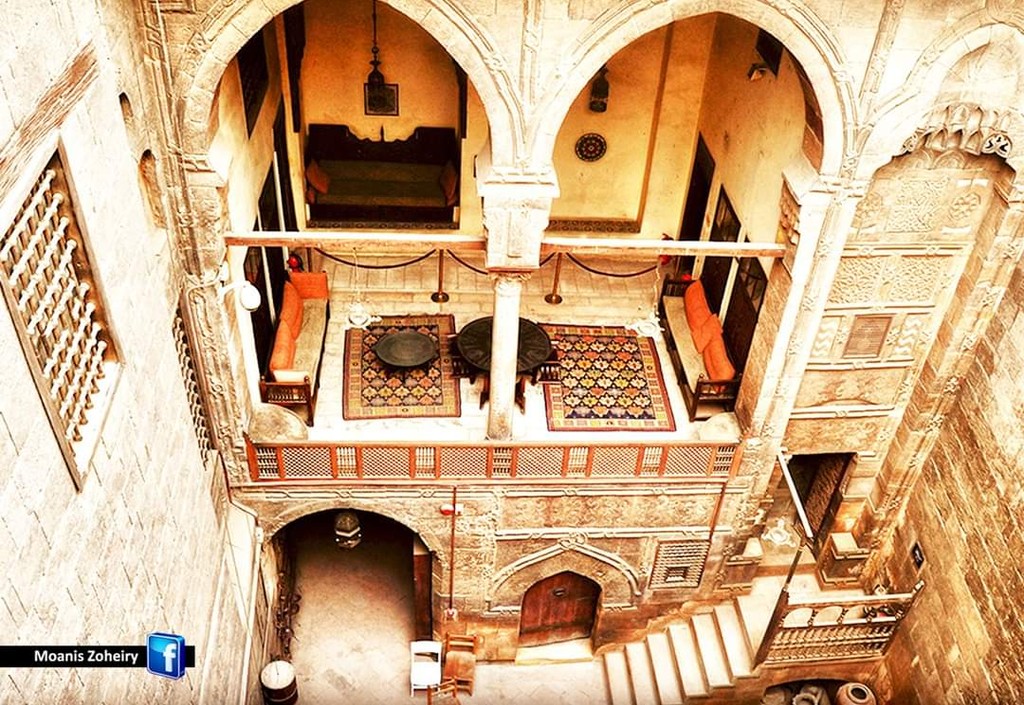
Gayer-Anderson Museum (Source: Google Maps)
The Gayer-Anderson Museum, located adjacent to the Ibn Tulun Mosque, is a fascinating cultural site that offers a glimpse into 17th-century Cairo. This historic house museum is named after the British army officer and collector, Sir Gayer-Anderson, who lived in the building in the 20th century. The museum showcases a diverse collection of art, antiques, and artifacts that reflect the rich history and cultural diversity of Cairo. Visitors can explore the beautifully preserved rooms, each filled with items that tell stories of the past. The Gayer-Anderson Museum serves as a cultural treasure, highlighting the importance of preserving Egypt's artistic heritage.

Your travels, your rules.
Create your own Free Walking Tours.
Set your preferences, distances and anything you want to do or see.
Completely free, no payment required.